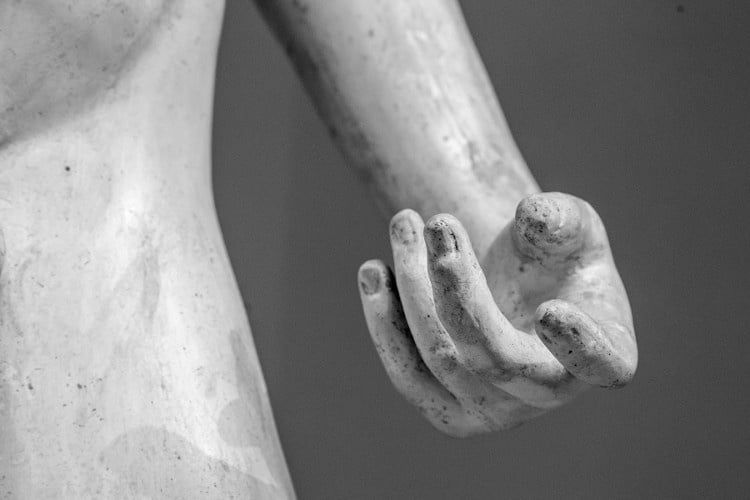
Photo: gilmanshiny/Depositphotos
In the hands of a talented artist, marble can become a highly realistic and detailed work. Understandably, the reliefs and intricacies can spark the desire to touch a finished sculpture in some people. But on top of endangering the piece by accidentally toppling it over, the act of touching a marble sculpture can also take away from the beauty of the material itself. The National Museum Wales has demonstrated what would happen if all visitors touched one of its famed marble vases. The results are revealing, to say the least.
The museum is home to The Jenkins Vase, named after Thomas Jenkins, a Classical art dealer who is thought to have acquired it in 1769. Made from a round Roman altar first recorded near Naples in 1489, it was transformed into a vase at some point in the 18th century. At 172 cm (67.7 inches) tall, it is truly a sight to see, even inspiring those who visit the museum to turn it into beautiful illustrations.
While the vase is not roped off, the museum hopes patrons will keep their distance—and their hands to themselves. A plaque in front of the vase reads in Welsh and English, “Please don’t touch the vase. Museums have good reasons for asking people not to touch things. The vase is made from carved marble. If every visitor to the gallery touched it, it would soon be dirty.”
Below it, the staff has attached two marble hands—one encased and one free to be touched by the visitors. “We want you to touch this piece of marble,” they add. “Look at the difference between the surface people have been touching and the area that hasn’t been touched.”
The area that has been touched is significantly dirtier than the one behind glass. The enclosed, untouched piece retains the pristine white of the marble, while the other has become a shade of beige, with dirt mounting at the creases, accidentally darkening the details and even making it look cartoonish.
On top of dirt, excessive rubbing can even lead to sculptures losing their details. For example, the bronze statue of St. Peter in St. Peter’s Basilica in the Vatican has had its foot worn down from the thousands of visitors that touch it every year. As appealing as it is to some to touch these pieces, observing them at a distance keeps them safe and will allow them to be marveled at by many more in years to come.
The National Museum Wales is home to The Jenkins Vase, named after Thomas Jenkins, a Classical art dealer who is thought to have acquired it in 1769.
We have an exciting rugby weekend in Cardiff and we’re starting to see trophies everywhere! We think our Jenkins Vase is a winner but it’s probably a bit too heavy to lift! #SixNations2019 #nationalmuseumwales pic.twitter.com/ig0UbvnZom
— FriendsofNMW (@NmwFriendsof) March 16, 2019
To prevent patrons from rubbing it, the museum has displayed a duo of marble pieces—one that is untouched and another that is touched by countless visitors. The results speak for themselves.
A museum demonstrating what happens when you let visitors touch marble
byu/frituurgarnituur inDamnthatsinteresting
National Museum Wales: Website | Instagram
h/t: [Reddit]
Related Articles:
18th-Century Book Invites You To Marvel at 570 Varieties of Marble in Stunning Detail
Artist Compresses Classical Sculptures Into Small Marble Cubes
The Mysterious History of the Marble ‘Venus de Milo’ Statue
Past and Present Clash in Striking Marble Sculptures That Appear to “Malfunction”
